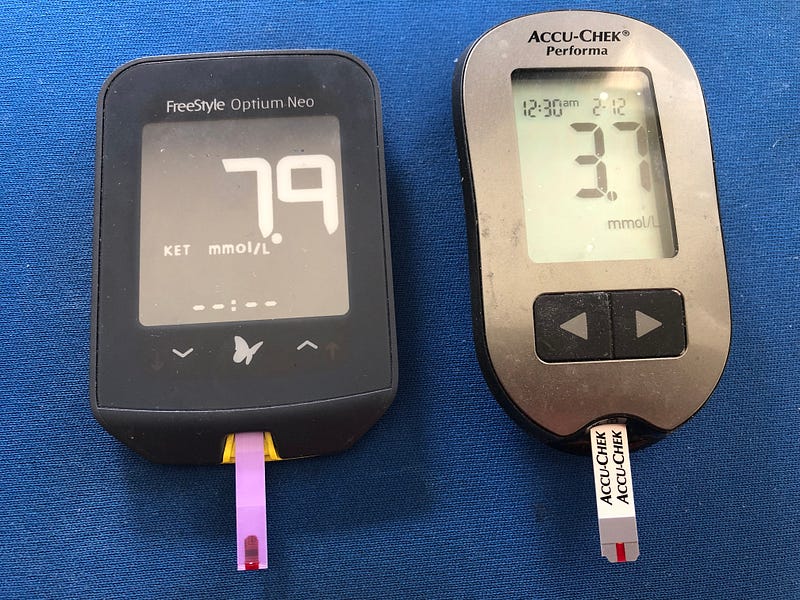Unraveling the Mysteries of Ketosis: A Comprehensive Guide
Written on
Chapter 1: Understanding Ketosis and Glycogen
If you're struggling to achieve ketosis despite making lifestyle adjustments, it’s crucial to grasp how glycogen stores function within the liver.

Having embraced a ketogenic lifestyle for many years, I've shared my experiences in various articles. This lifestyle focuses on consuming low carbohydrates, moderate healthy fats, and bioavailable proteins, while adhering to a specific eating schedule and engaging in consistent exercise.
Through extensive research and personal experimentation, I’ve gained insights into the interplay between ketosis and glycogen. I believe that sharing this knowledge could be beneficial for my readers, particularly those who frequently ask about their struggles with entering ketosis.
Many friends and readers are eager to achieve ketosis, which is commendable. However, they often rely on advice from magazines and online sources, anticipating that the telltale purple hue on their urine test strips will confirm their success.
They view these test strips as the ultimate indicator of ketosis—an unwelcome misconception. Unfortunately, beginners often face disappointment when they don’t see the expected results. Some of my friends jokingly say they’ll celebrate with a party if they ever see that purple color.
I empathize with them, as I too experienced similar frustrations when I began my keto journey without noticeable signs of success. However, I had overlooked critical insights that were buried in older textbooks and scientific studies that have recently resurfaced.
In this article, I’ll present this valuable information under two main headings. Additionally, I’ll provide a few practical tips for newcomers to the keto lifestyle.
Section 1.1: Addressing Common Misconceptions
To my friends who are feeling discouraged, I want to stress that the absence of a purple test strip does not mean you’re failing at keto. Those strips only measure a fraction of the ketones being utilized by your body.
Organs like the brain and heart use ketones as an alternative energy source, which means there may be very few available for the kidneys to filter out.
I also shared a more accurate approach to measuring ketosis, highlighting blood tests and breath analysis as superior methods. For example, after a 7-day extended fast, my blood test revealed a beta-hydroxybutyrate level of 7.9 mmol/L and glucose at 3.7 mmol/L, signaling deep ketosis and even leading to a remarkable lucid dream.

Section 1.2: The Role of Glycogen in Ketosis
As I mentioned earlier, ketosis serves as a vital metabolic switch for energy production. Typically, our bodies rely on carbohydrates to generate glucose for energy. However, during ketosis, the body transitions to using fat as its primary energy source, particularly when carbohydrate intake is reduced.
This process involves breaking down stored and dietary fats into ketone bodies—clean fuel for the brain and heart, while also serving as signaling molecules to our genes.
Glycogen, stored in the liver and muscles, acts as a quick energy reserve, especially when consuming refined carbohydrates. Think of it as a small backup energy source, while our larger fat reserves sustain us for longer periods.
The magic of ketosis occurs when glycogen stores are depleted, prompting our bodies to utilize fat for energy, a survival mechanism refined over millennia.
Chapter 2: Tips for Successfully Entering Ketosis
The first video titled "Glycogen Storage & Electrolytes on Keto & Intermittent Fasting – Dr. Berg" explores the relationship between glycogen storage and the ketogenic diet, highlighting essential electrolytes.
The second video titled "Step 3 to RESET Your Metabolism to Burn Fat (Reduce Glycogen)" provides key insights into resetting your metabolism for effective fat burning.
To ease into a ketogenic lifestyle, consider the following tips:
- Gradual Transition: Avoid shocking your system by making sudden changes. Start by skipping one meal, such as breakfast, and cut out snacking.
- Nutrient-Dense Foods: Focus on healthy carbohydrates from vegetables or nuts, along with healthy fats like avocados and fish, and adequate bioavailable proteins.
- Diverse Diet: Regardless of whether you identify as a herbivore, carnivore, or omnivore, you can achieve ketosis. However, limit refined carbohydrates.
- Stay Hydrated: As your body adjusts, it loses a significant amount of water. Drink plenty of water, tea, or coffee without added sugars.
- Monitor Electrolytes: Maintaining balanced electrolytes is crucial, especially during ketosis. Whole foods are a good source, but consider supplementation if fasting or exercising intensely.
- Limit Sugary Drinks: Be cautious with fruit juices and sugary beverages, as they can quickly replenish glycogen stores and hinder your ability to enter ketosis.
Remember, until glycogen stores are fully utilized, entering ketosis may be delayed. Achieving ketosis is a journey, and your body is simply learning to adapt to its new energy source.
Stay aware of ketoacidosis, a medical condition primarily affecting individuals with type 1 diabetes. It is distinct from nutritional ketosis and can be serious.
As with any dietary lifestyle, ketosis may not be suitable for everyone. If you have concerns, consult with your healthcare provider or a dietitian specializing in ketogenic diets.
Thank you for taking the time to read my insights. I wish you all the best on your journey toward better health and wellness.